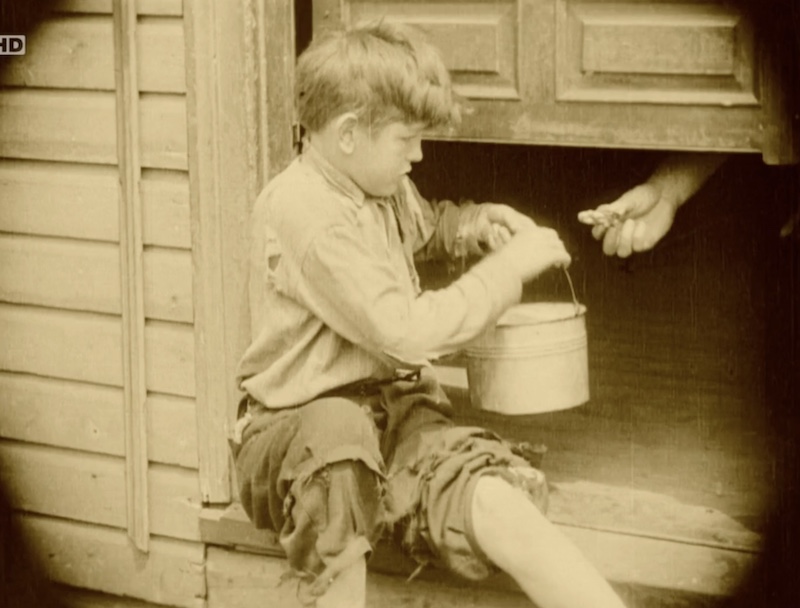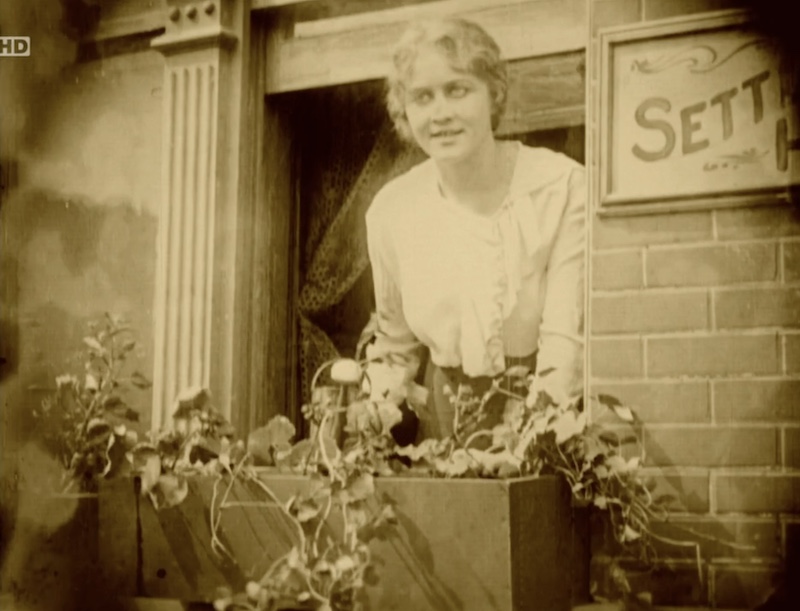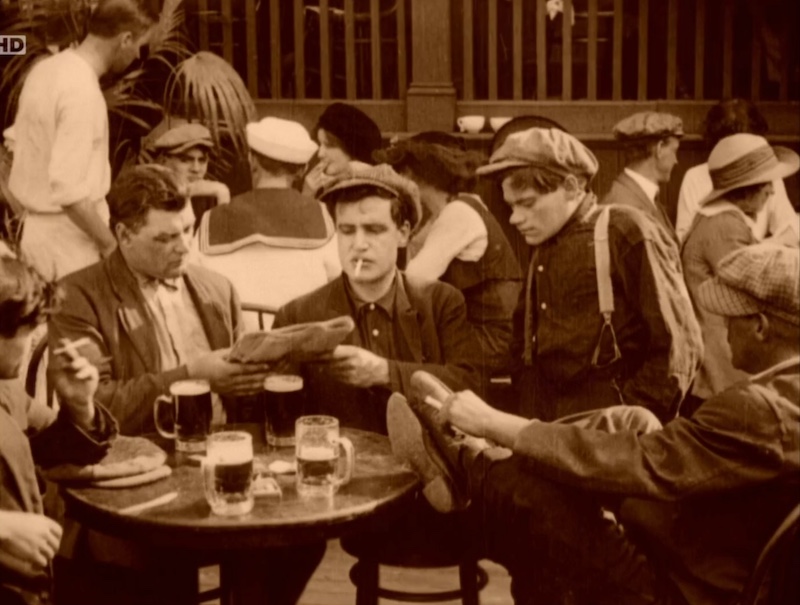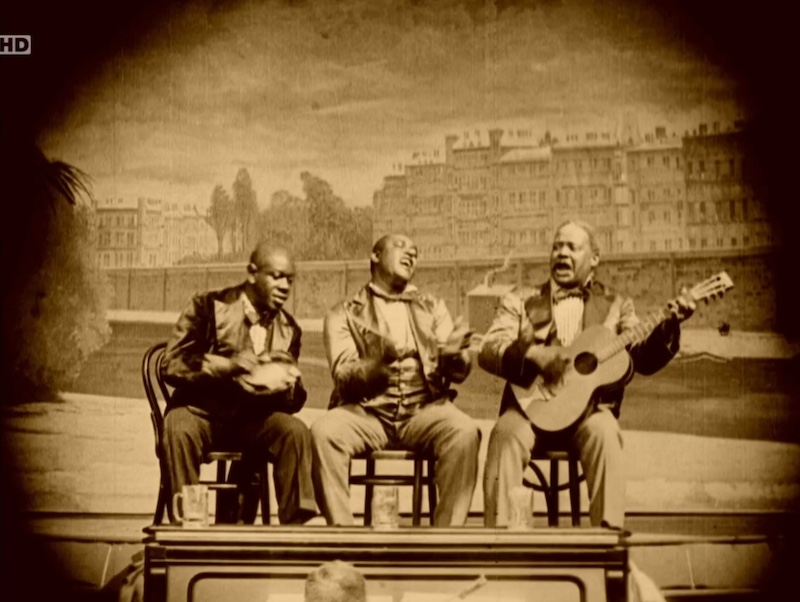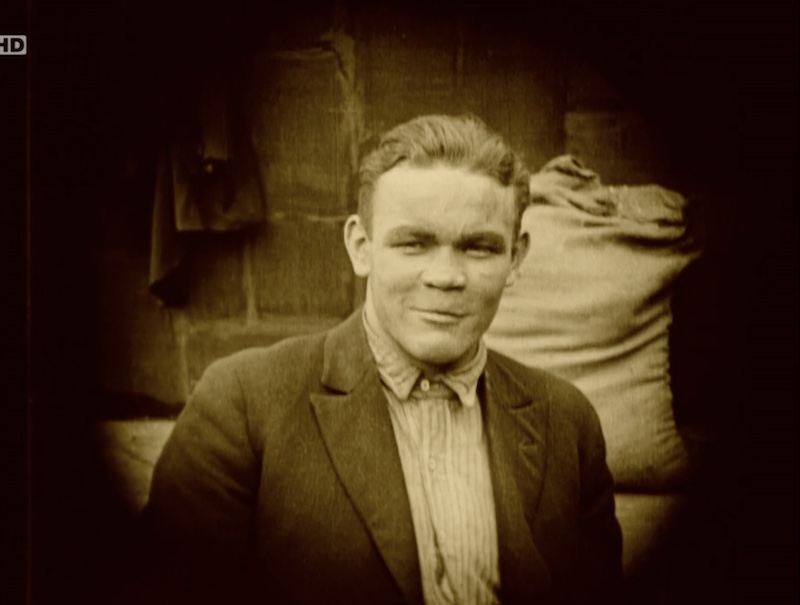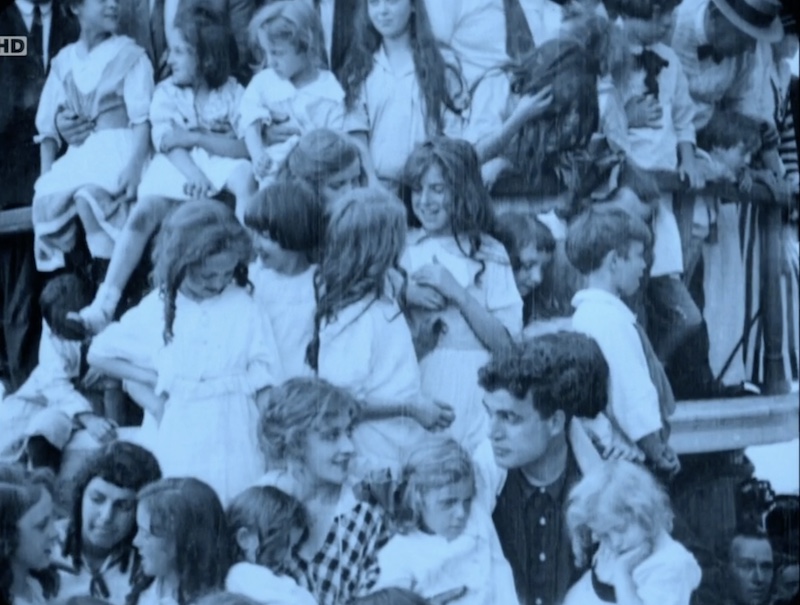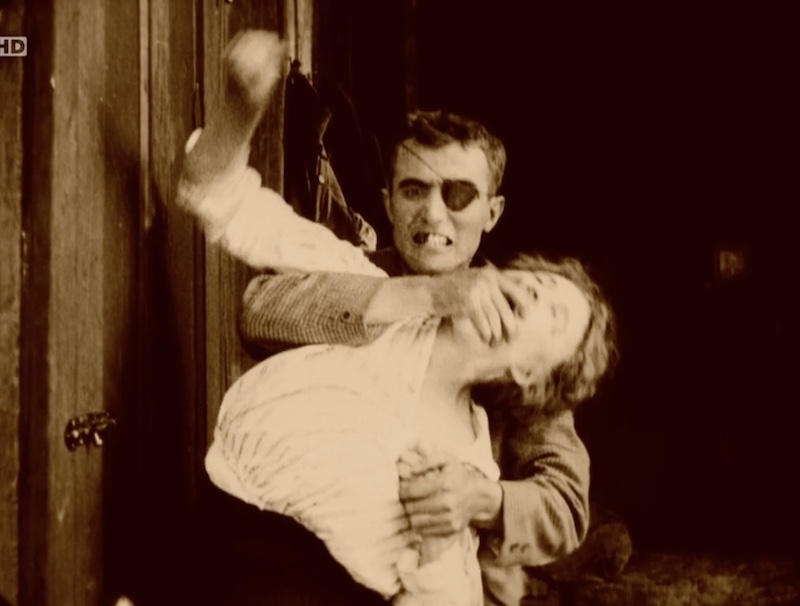Sunday March 31, 2024
Movie Review: The Regeneration (1915)
WARNING: SPOILERS
A lot of the tropes of early gangster flicks are here. I’m assuming they began here since there’s not much before here.
Start with those tin pails for beer drinking and transportation—the original growlers—which turn up in the Frankie Darro scenes of “The Public Enemy.” That’s more historical convention than movie one, but it’s still cool that “Public Enemy” got the historical details right.
We get a version of the 1904 General Slocumb disaster, New York’s biggest mass killing before 9/11—as seen in the 1934 Clark Gable gangster flick “Manhattan Melodrama,” the movie that ended John Dillinger’s life.
How about a hunchback/little person as attaché to the gangster? He turns up as Humpy (John George) in “Outside the Law” (1920) and Miller (Snitz Edwards) in “The Public Enemy” (1931), except those guys were snitches for the bad gangsters. Here, Hughy the hunchback helps redeem the gangster hero, Owen (Rockliffe Fellowes), not only by encouraging his relationship with the social reformer Marie (Anna Q. Nilsson), but by killing the bad gangster himself.
Oh right, the basement hideout. It’s an almost exact replica of the hideout the Dead End Kids will use in “Angels with Dirty Faces.” Or theirs was a replica of this.
Most important, anticipating “Public Enemy” and “Angels with Dirty Faces,” “The Regeneration” gives us a gangster’s coming-of-age story as sociological study. We see Owen at ages 10, 17 and 25, with the child father to the man. He’s not a bad kid, he’s just given a bad break. Or a series of them. Or a series of awful ones. The beginning of this movie should be required viewing for libertarians. To show them what life was like before any sense of governmental regulation. To show them what dumb shits they are.
Drinking beer
This part: When Owen’s mother dies, the authorities arrive to cart away her body and … that’s it. That’s all they do. “Hey, what about that barefoot, 10-year-old boy (John McCann) in rags in the dilapidated apartment upstairs? 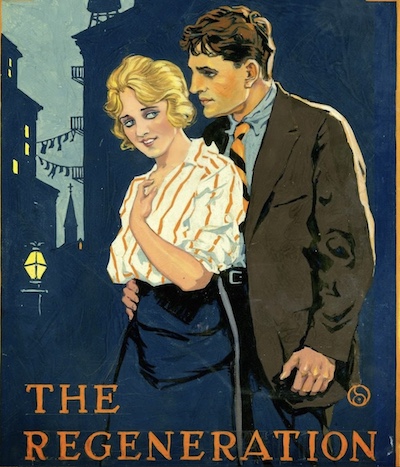 Any reason for us to check on him?” “Nah, he’ll get by.”
Any reason for us to check on him?” “Nah, he’ll get by.”
Except it’s not exactly by the kindness of strangers. Maggie, a fat neighbor lady, muses a bit, then says to her drunk husband, Jim, “The kid’s alone now. I’m going to bring him in here.” Is it a kind gesture? Not really. Owen is immediately put to work and slapped around. He’s sent to fetch more tin pails of beer for the old man and his drunk friend. He’s less son than servant.
“And then years pass,” we’re told via title card, “and Owen still lives in a world where might is right—and where the prizes of existence go to the man who has the most daring in defying the law…” That’s what the title card says. What the movie shows us? On the waterfront, when a bully mocks a hunchback, Owen, now 17 (Harry McCoy), beats him up. It’s not exactly “defying the law.” Not exactly gangster stuff.
To be honest, Owen is never much of a gangster. We’re told he becomes a gang leader at 25 because of “a complete assortment of the virtues the gangsters most admire.” And what are those? That we see? Well, he bullies one guy into paying for their beers. And he drinks beer. That’s about it. He’s not far off from Associate Justice Brett Kavanaugh.
But DA Ames (Carl Harbaugh) pledges to sweep the city clean of such trash! One night, he attends dinner with the Deering family, which lights the imagination of social butterfly Marie (Ann Q. Nilsson), who declares she wants to go seean actual gangster. It’s socialite-slumming a la 1929’s “Chinatown Nights,” but Ames proves an unheroic chaperone. His picture’s been in the paper, the gang doesn’t like it, and when he has to go back for Marie’s wrap he’s set upon by the gang. Marie is horrified. Her eyes plead with Owen—who’s been making eyes with her—and win. Owen stops the bullying. The next thing you know, Marie is involved in the social reform movement at the Settlement House.
At this point, the movie turns episodic. Marie lets the gangsters join their group aboard a boat, and Skinny (William Sheer), Owen’s eyepatching-wearing right-hand man, tries to impress some girls. They remain unimpressed, so he flicks his cigarette into a pile of ropes. It starts a fire. This is the General Slocumb-esque disaster, and we get several minutes of panic while the patina of the film changes from yellow to red.
Then the Settlement House has a problem with a brutish husband, so they send the little bespectacled guy. Nope. So Owen goes. That works. Afterwards, he sees GOD IS LOVE on the House chalkboard and leaves. He knows he doesn’t belong in such a place.
But Marie thinks he does. She goes to the gang’s hideout, where he’s doing his usual midday drinking, and points out a nearby drunk sleeping it off, with insects crawling on his face. Is that what he wants for himself? That’s when Owen joins the social reform movement while Skinny takes over the gang. Done and done.
Except Skinny ain’t exactly smart. His first act as gang leader? Knifing a cop. His second act? Pleading with Owen to hide him. The third? Attempting to rape Marie. Making a lot of friends, isn't he?
Why Owen hides Skinny is interesting if you’re a Cagney fan. It’s more than gang loyalty. Owen flashes back to when they were younger, getting chased by the cops, and Skinny trips and is caught—but doesn’t squeal. It’s basically Rocky and Jerry from “Angels with Dirty Faces.”
Though the cops don’t find Skinny, Marie finds his cap, can’t believe Owen lied to her, and retires crying. The DA, who’s shown up again at the 11th hour, cackles with glee, while Owen—and, again, shades of Father Jerry—visits a priest. Meanwhile, Marie overcomes her grief and tries to find Owen. Instead, she finds the gang, who eye her menacingly. Then Skinny tells her Owen is upstairs. He ain’t.
The real hero is the hunchback. He alerts the cops, he alerts Owen to Marie’s predicament, and Owen goes after Skinny. Fleeing, Skinny fires at Owen, misses, and hits Marie hiding in a closet. In the hospital, surrounded by Owen and others, Owen vows vengeance, but she points to an image floating above her bed in Biblical tablet form:
VENGEANCE IS MINE, SAITH THE LORD
ROMANS 12-13
I think she’s saying let God handle it.
He seems to abide by her dying request. Tossing the gun aside, he goes after Skinny to bring him to justice rather than kill him. He comes in through the skylight (another great early trope), they fight, and just as Owen is about to strangle Skinny he sees the distraught image of Marie counseling goodness.
So how does Skinny get it? Surrounded by cops, he tries to scale the clothesline to another building, but the hunchback spots him and shoots him down. Then he and Owen commisserate over Marie’s grave.
Just who is this diminuitive hero who keeps doing the right thing? I mean, who is the actor playing Hughie? I don’t know and I can’t find out. Nobody seems to know. He’s not listed in IMDb, Wiki, AFI. Go back via newspapers.com to contemporary reviews and still nothing. Somebody somewhere must know, I’m just not finding it.
Irish rose
Apparently the film was lost for many decades until it was ressurected (or, you know, regenerated) by the Museum of Modern Art in the 1970s. Not sure how/where they found it. The movie is of particular interest not just because it’s an early gangster film, and not just because it’s one of the first features from famed director Raoul Walsh, but because it was filmed on location and often used Lower East Side gang members as extras. It’s truly historical.
Nilsson, an early Swedish import, had a long career, appearing in more than 200 films—mostly in the 1920s, when she was a star—but her best-known modern role is probably as one of the silent-era “waxworks” playing bridge with Norma Desmond in “Sunset Blvd.” Her last film was an uncredited part in “Seven Brides for Seven Brothers.” She died in 1974, age 85.
And the fellow with all the extra “e”s? Rockliffe Fellowes of Otawa, Canada had a shorter career (62 credits) and a shorter life (he died in 1950, age 65), but I was delighted to find out I’d seen him before. He played Joe Helton, a retired gangster, whose daughter is kidnapped by a rival in the great Marx Bros.’ film “Monkey Business.”
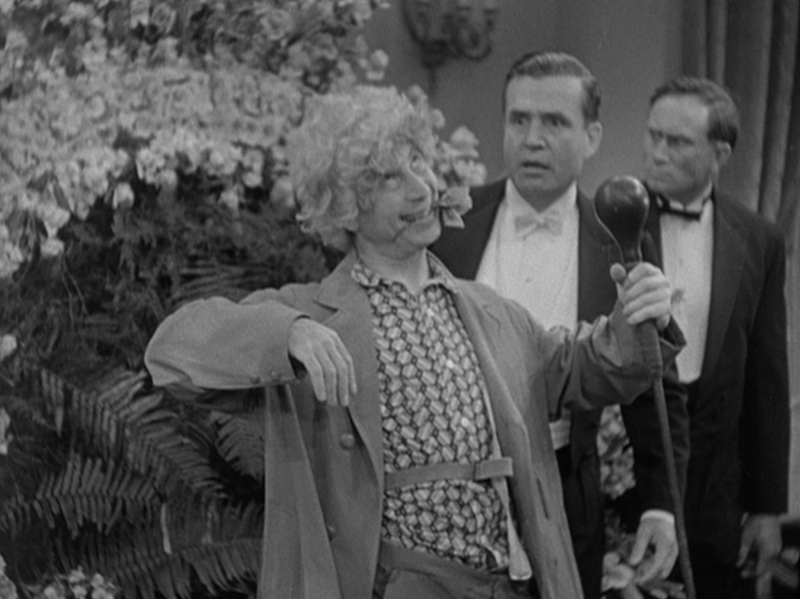
He’s not a bad straight man, but for some reason, two years later, his film career was over.
At the end of this film, over the graveyard, Owen says Marie was the noblest and purest thing he ever knew, and then calls her “my Mamie Rose.” That sounded off to me. Made her sound like his mother. But that’s actually the title of the memoir on which this movie is based, published in 1904 by Owen Frawley Kildare. Wait, not novel? Memoir? Yes, Kildare claimed Owen’s story as his own, though some say he was born to wealth in Maryland but fled and became a newspaper hawker and itinerant everything before becoming “the Kipling of the Bowery,” as newspapers of the era called him. “My Mamie Rose” wound up being adapted for the stage in 1908, though Kildare didn’t much like the actor playing him. At least he didn’t have long to fret. Shortly thereafter, he fell in the subway, suffered a series of breakdowns, and in 1911 died in the Manhattan state hospital for the insane on Ward’s Island. In one newspaper, news of his death is next to an article on the continued incarceration of the murderer Harry K. Thaw. Does that name sound familiar? Yep: “Ragtime,” which was the last screen role for James Cagney. Full circle.
SLIDESHOW
Baseball's Active Leaders, 2023
What Trump Said When About COVID
Recent Reviews
Everything Everywhere All at Once (2022)
Black Panther: Wakanda Forever (2022)
Doctor Strange in the Multiverse of Madness (2022)
Spider-Man: No Way Home (2021)
The Cagneys
A Midsummer Night's Dream (1935)
Something to Sing About (1937)
Angels with Dirty Faces (1938)
A Lion Is In the Streets (1953)
Man of a Thousand Faces (1957)
Never Steal Anything Small (1959)
Shake Hands With the Devil (1959)







